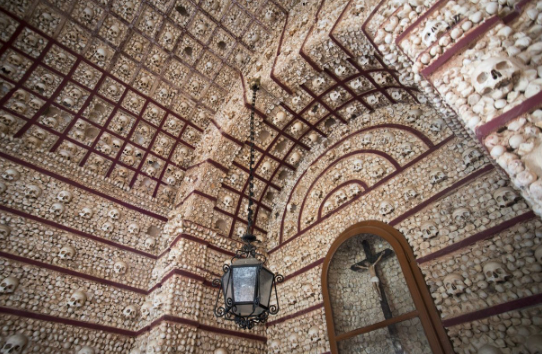To many, the fact that there are places where human bones are used to “decorate” the walls makes them feel uncomfortable and is also macabre to see. In fact, it is not an unusual thing to do.
An ossuary serves as the final resting place of human skeletal remains when burial space is scarce.
Lagos, Alcantarilha and Faro all have ossuary chapels that are open to the public and are connected to churches that are well-worth visiting.
Igreja de São Sebastião in Lagos was originally a 14th century hermitage, converted in the 15thcentury to a Roman Catholic church.
Subsequently, there have been additions such as the two fluted Doric columns forming the entrance dating from 1612 and the typical 19th century altarpiece.
There is a small fee for entrance to what is perceived to be an uninspiring church building but, once inside, you will be surprised at the architecture and decoration. The chapel of bones is located on the south side of the church.
In Alcantarilha the chapel of bones is located on the south-side of the 16th century parish church. Beautifully decorated, Igreja Matriz de Alcantrilha was built in Manueline style (often referred to as Portuguese late Gothic) and has an 18th century altarpiece.
After visiting the church and chapel, the village is welcoming and worth a walk around. It’s a good place for a coffee break or lunch.
Originally built over a six-year period the 18th century church, Igreja de Nossa Senhora do Carmo in Faro has two beautiful carved gilt altars. The altar in the chancel is the original carved by Manuel Martins in 1737 which was the first example of Joanine-style (early 18th century) decoration.
The chapel of bones is accessed from the courtyard of this church and is the final resting place of Carmelite monks.
Again there is a small entrance fee which helps towards the upkeep of the building.


One thought on “Unusual chapels”